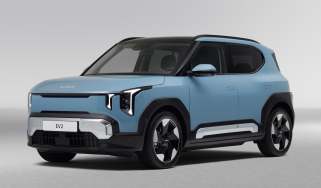Driving shades feature
Summer’s on its way... so it’s time to look at all the new pairs of sunglasses on the market – and choose the best for drivers.
Summer, when the sun is shining, is the perfect time to take your car for a spin. But just as you’d take precautions to prevent sunburn, you need to ensure your eyes are protected, too.
Opticians warn that exposing your eyes to strong sunlight can cause cataracts, retina damage and lead to other complications, so it’s wise not to skimp on shades. But with so many different variations available, how do you pick a pair for driving?
The most important thing is to ensure the glasses have a CE mark or conform to British Standard BS 1836: 1997.
What damages your eyes is ultraviolet (UV) light – specifically types A and B. Plastic lenses reduce these rays, but not all eliminate them. Check the glasses you are buying have a UV400 label or one stating they block these rays 100 per cent. Those which only partially block UV, but have a dark tint, are especially risky, as they can open the pupil and let more of the harmful light into the eye.
Tint
Picking a tint is important. There are five categories from zero to four – the higher the number, the darker the lens. Driving shades should range from zero to three, as category four lenses cut too much light. Look for tints in neutral grey, amber or green, as these distort colours less than blue or pink shades.
Photochromic or transition lenses, which change darkness according to ambient light, often don’t work too well in a car, as some UV rays are filtered by the windows. And as the shades react to UV levels, they may not go as dark as if they were in direct sunlight. If you wear UV-blocking contact lenses, you should still wear sunglasses for full protection.
For the ultimate glare reduction, check out polarized lenses, although these may cause some problems with older or tinted screens.
Drivers should avoid frames with excessively thick arms, as they can cut your peripheral vision. For top protection, go for wraparound lenses to keep gaps to a minimum. Glasses with adjustable nose bridges and arms will make getting a good fit easier.
Which frame will suit your face?
Oval face: Choose symmetrical frames with centrally attached arms.
Rectangular: Go for deep, soft shapes or wider frames with central arms.
Round: Try a shallow, angular frame with high arms.
Square: You’ll benefit from soft, angular frames with high arms.


